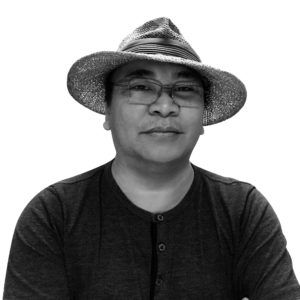
One of the most common causes of traffic and traffic jams … is the practice of drivers of public utility vehicles in stopping right in the middle of the road and even at the intersection of busy streets to receive and discharge passengers in flagrant violation of traffic rules and regulations.”
So said Cebu City Vice Mayor Arsenio Villanueva. Villanueva who? You’re probably confused by now. Our present vice mayor is Edgardo Labella, so who is this Arsenio Villanueva? Well, for probably 90 percent of Cebu’s population, his name won’t ring a bell; for he was vice mayor of the city way back on Wednesday, July 13, 1948 when he made the remarks above.
His observation, printed in “The Pioneer Press” a day later, came on the heels of a study conducted by the United States Public Roads Authority (USPRA).
Nothing much, it seems has changed with the behavior of some of Cebu’s public transport drivers, despite changes in the technology of vehicles. The same problems the city suffered then continue to hound us now, but in ever larger proportions, given the length and breadth of the city and its spillover into what is now the Metro Cebu area.
Consider Villanueva’s observations and reflect on our problems now: “There are at present more people in the city who use vehicles in going from one place to another and yet the number and size of the roads remain the same.” Sounds familiar, no?
Such was the problem of traffic jams in a city with a much lower population than now that the USPRA, planner of road networks in the U.S. at the time, had to come in. The year before it had sent experts riding on airplanes to make aerial shots of the city’s streets in order to come up with a traffic study, barely three years after the city had been leveled by bombs. This was the same one that Villanueva was discussing with news reporters a year later.
Fast forward 70 years later and it may no longer be the U.S. doing traffic studies for — we now thankfully have local experts in time and motion studies funded by the Japan International Cooperation Agency (JICA), among others — but times have changed so little. Planning in this country, not just in Cebu, you see, has become something of a reactionary activity, so bereft of visioning by some of our local executives grounded down by various self-interests that have impact on the future of their constituents: political survival and avoiding the exercise of political will. Which is why Pres. Rodrigo Duterte’s desire to finalize local zoning plans is to be lauded.
For the moment, however, we get stories like the difficulty of removing those tricycles plying so dangerously on national highways in contravention of national laws passed decades back. The usual answer is that local governments have no alternative jobs for their drivers and the families they need to feed daily.
Nobody questions why these local governments did not plan for the future of these tricycle and, soon, jeepney drivers, who will be disenfranchised and further impoverished and marginalized by developments that will eventually erase their livelihoods come hell or high water. The shining exception is perhaps the Bus Rapid Transit if we are to believe that funding has been made available to conduct studies and meetings with jeepney and tricycle drivers who will be affected should this much-promised yet still-so-unfulfilled BRT system eventually materialize.
The other reason is that the poor drivers are a potent electoral force, one that can sell their votes to the highest bidder. And thus we are left with local executives who have no political will to address their future years ahead.
I am reminded of what two old ladies told me when I visited that sadly slum-infested Cebu Chinese Cemetery last week. I commented that it would perhaps work if the Asociacion Benevola de Chinos de Cebu which owned the cemetery would work with government to set up affordable mid-rise housing for everyone to be able to leave the dead in peace at last. These two ladies almost in chorus replied, “Kung election na gani, hala tanan pulitika mo-promise dayon nga tukuran mo namo og kapuy-an.
Kada election gyud na. Paghuman sa election, pagdaug nila, wa gyuy gihimo; wa gihapon mi’y padulngan.” (Come election time, all these politicians come to us promising housing for us. Every election time they do that. And after they win, still nothing; we still have nowhere to go.)
I would have wanted to retort: So why vote for them? But such arguments are useless in a country where poverty forces people to sell their votes to the highest bidder who is often unqualified and sorely lacking envisioning and working on that vision for a better Cebu.